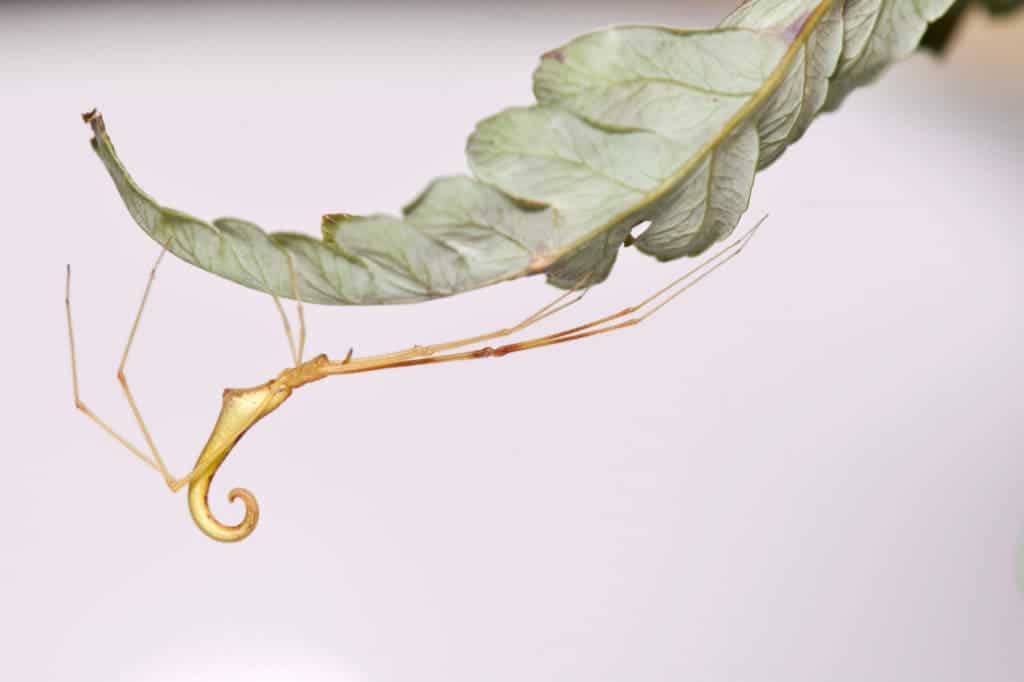The Hawaii islands are very isolated in the Pacific Ocean and subsequently, only a few animals and plants made it there by chance. The ones that did settle then evolved into a variety of different forms. Two to three million years ago, spiders floating on silk threads managed to make it across the ocean to Hawaii. One species of Ariamnes stick spiders made to the archipelago and once there it evolved into 14 new species. Interesting, very similar species evolved on each island separately.
The Ariamnes stick spiders, which normally steal food from other spiders’ webs, ran into a food shortage when they arrived on Hawaii. So, they had to get creative and started trapping and eating other spiders. There were several different habitat types on the islands so that the original spiders evolved into several different species to occupy these habitats. The different islands that make up the archipelago of Hawaii are quite similar because they were formed volcanically. The same types of spiders evolved independently on each island. For example, almost every island has a brown spider that lives in rocks, a gold spider that lives under leaves, and a white spider that lives on lichen. According to Rosemary Gillespie, professor and Schlinger Chair in Systematic Entomology at UC Berkeley and lead author of the paper, the gold and brown ecomorphs are on all islands, while the white have so far been found only on Oahu and Maui.
“The lineage in Hawaii is “monophyletic” meaning that a single individual, or a single pair, established and gave rise to the radiation we see today,” said Rosemary Gillespie to ZME Science.
“This very predictable repeated evolution of the same forms is fascinating because it sheds light on how evolution actually happens,” said Rosemary Gillespie. “Such outstanding predictability is rare and is only found in a few other organisms that similarly move around the vegetation.”
Now, there are 14 species of Ariamnes stick spider that live across Hawaii. Interestingly, the spiders that live on the same island are the most closely related. So, the gold spider living on Hawaii Island is more similar to the brown spider on Hawaii than the gold spider living on Maui. Even though the two gold spiders look almost the same, they evolved separately. The spiders on the same islands came from the same ancestor.
The evolution of these spiders is a case of convergent evolution. Convergent evolution is when non-related organisms evolve extremely similar characteristics separately. They develop these characteristics because they live in similar environments or ecological niches. Similar environments impose similar challenges, and traits improving survival are favored. This suggests that there are “ideal” traits for different environments. Islands, in particular, are hotspots for biological diversification because they are so isolated. Darwin’s famous finches evolved from just one ancestor species to a radiation of different species specialized for the different types of food available on the Galapagos. These spiders present another interesting case of adaptive radiation.











